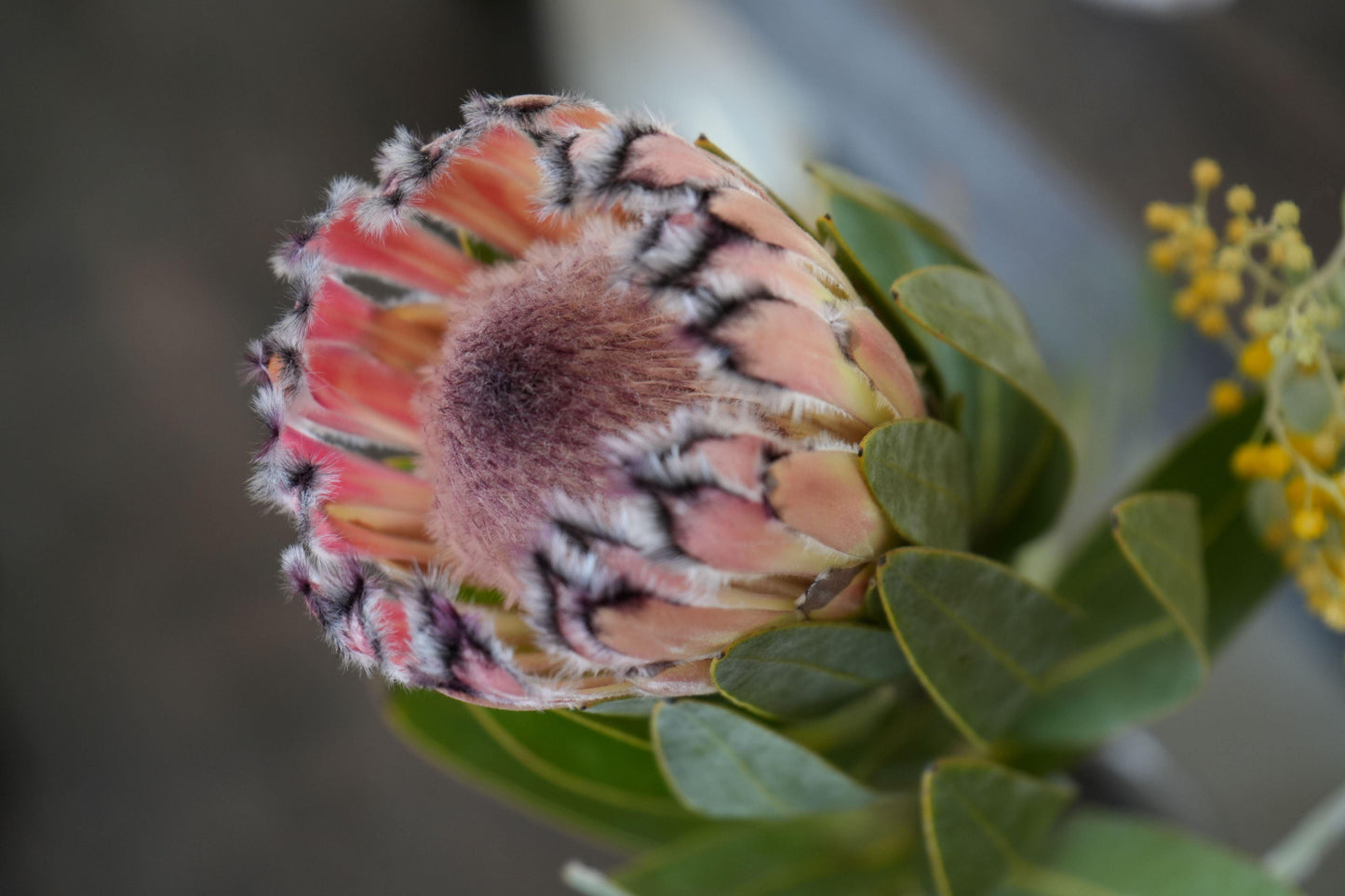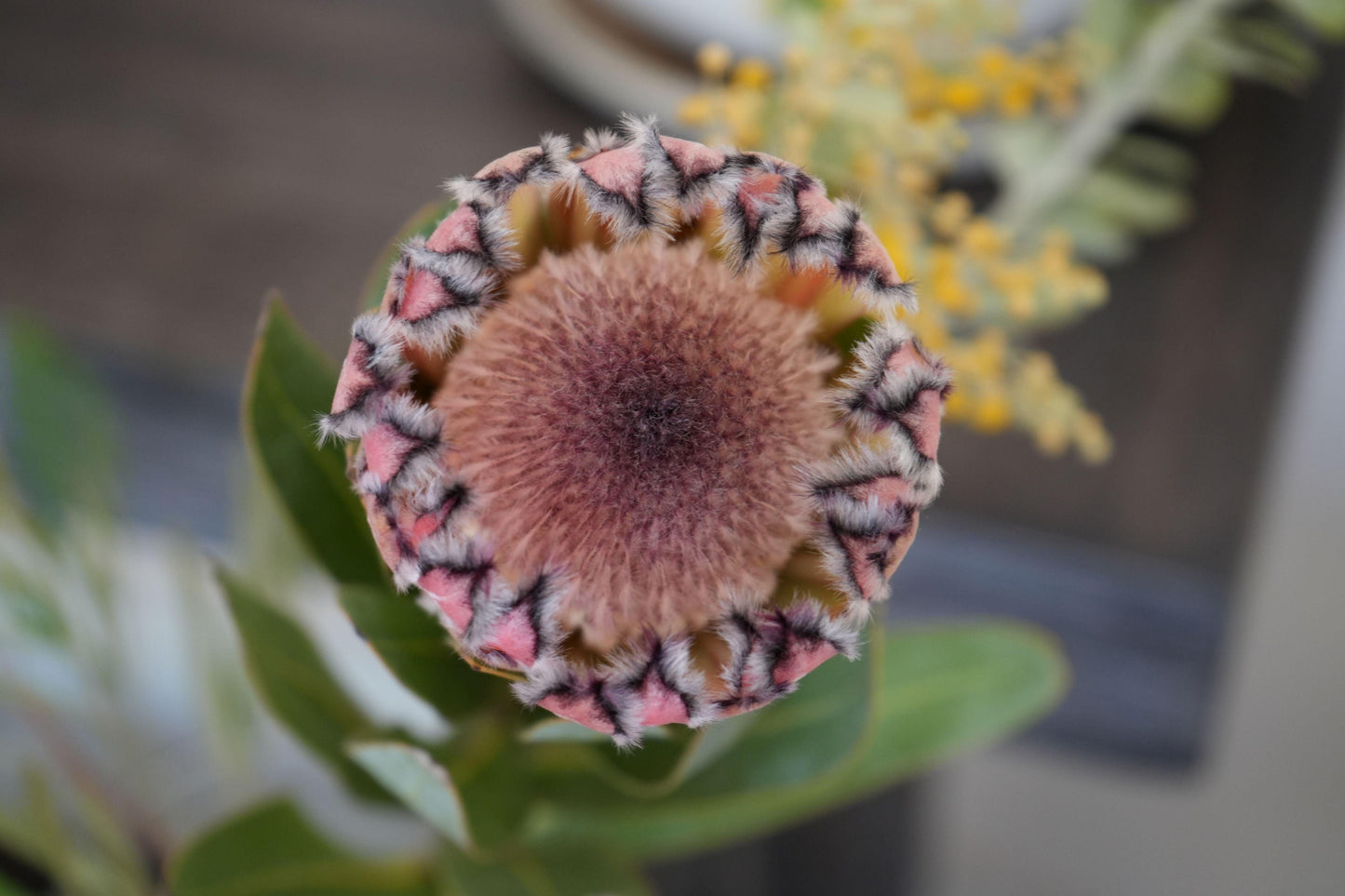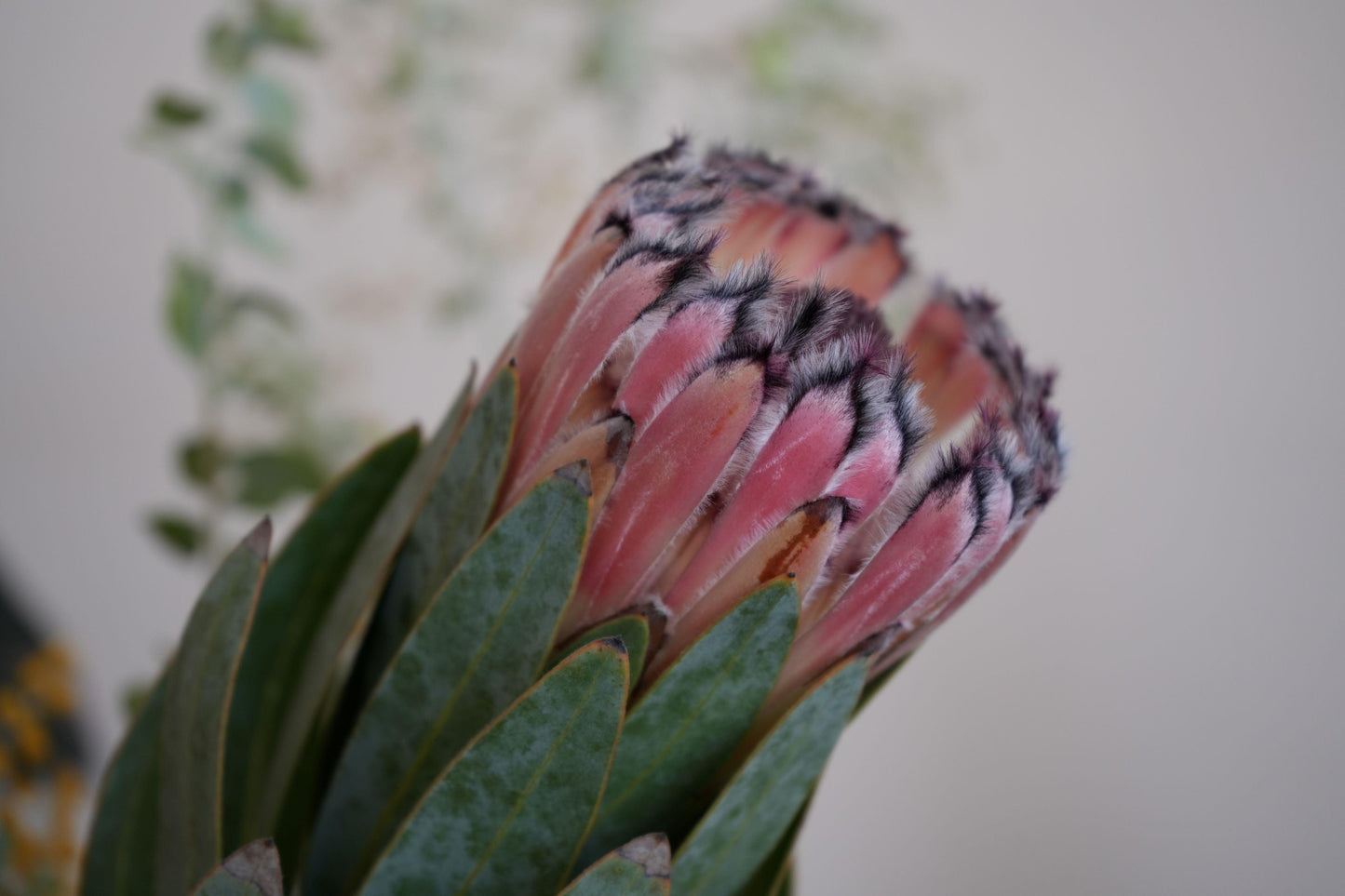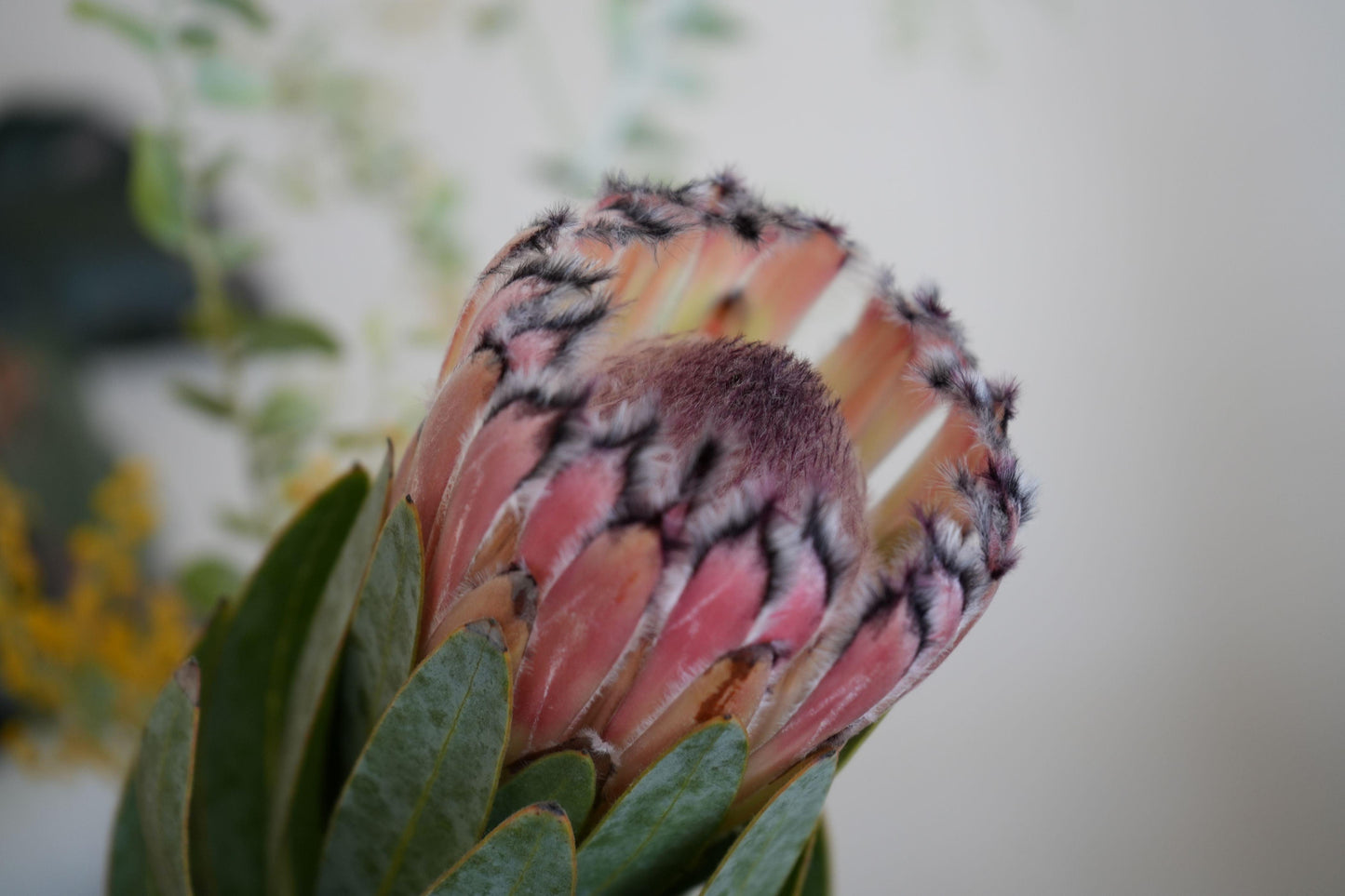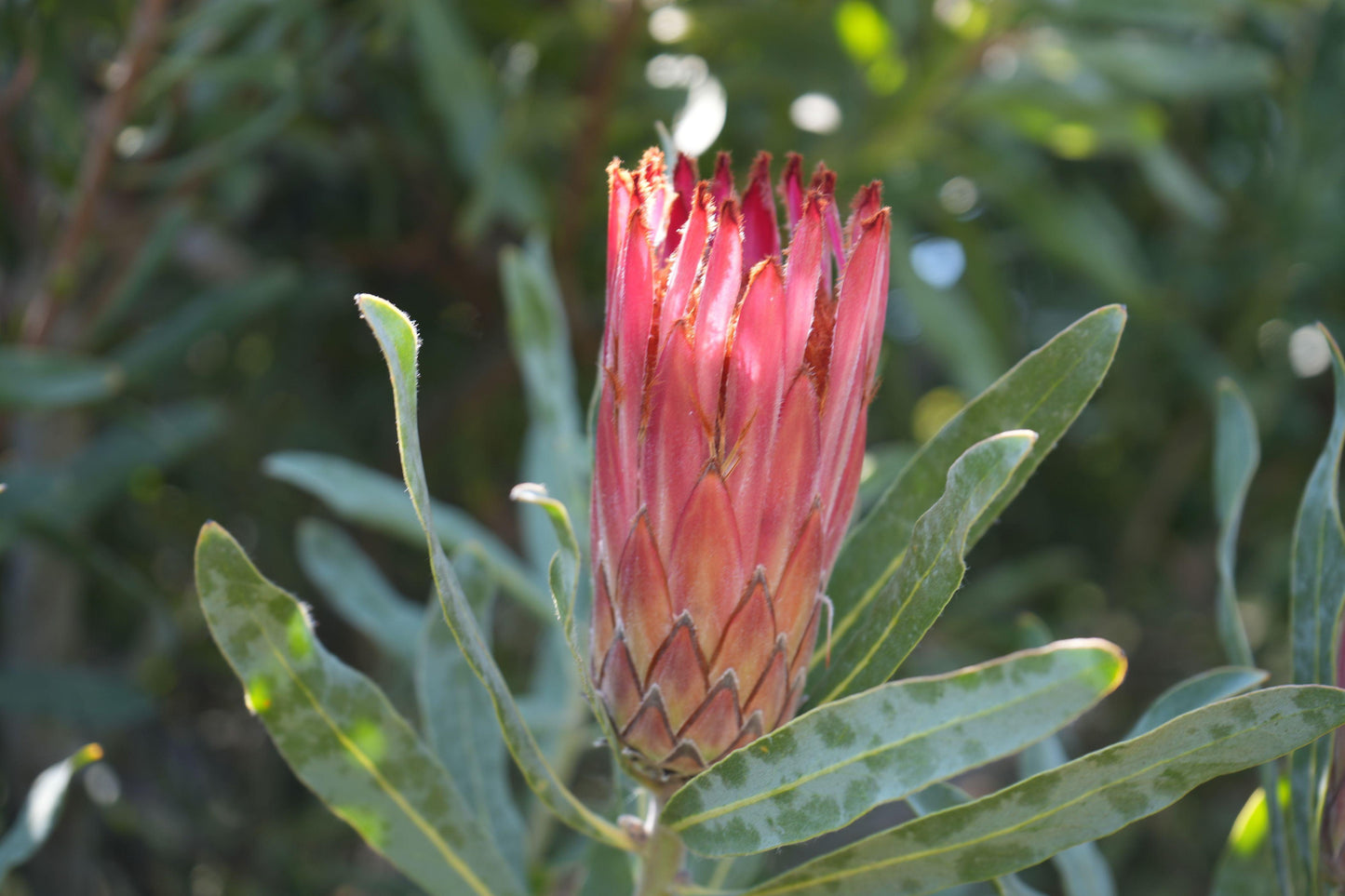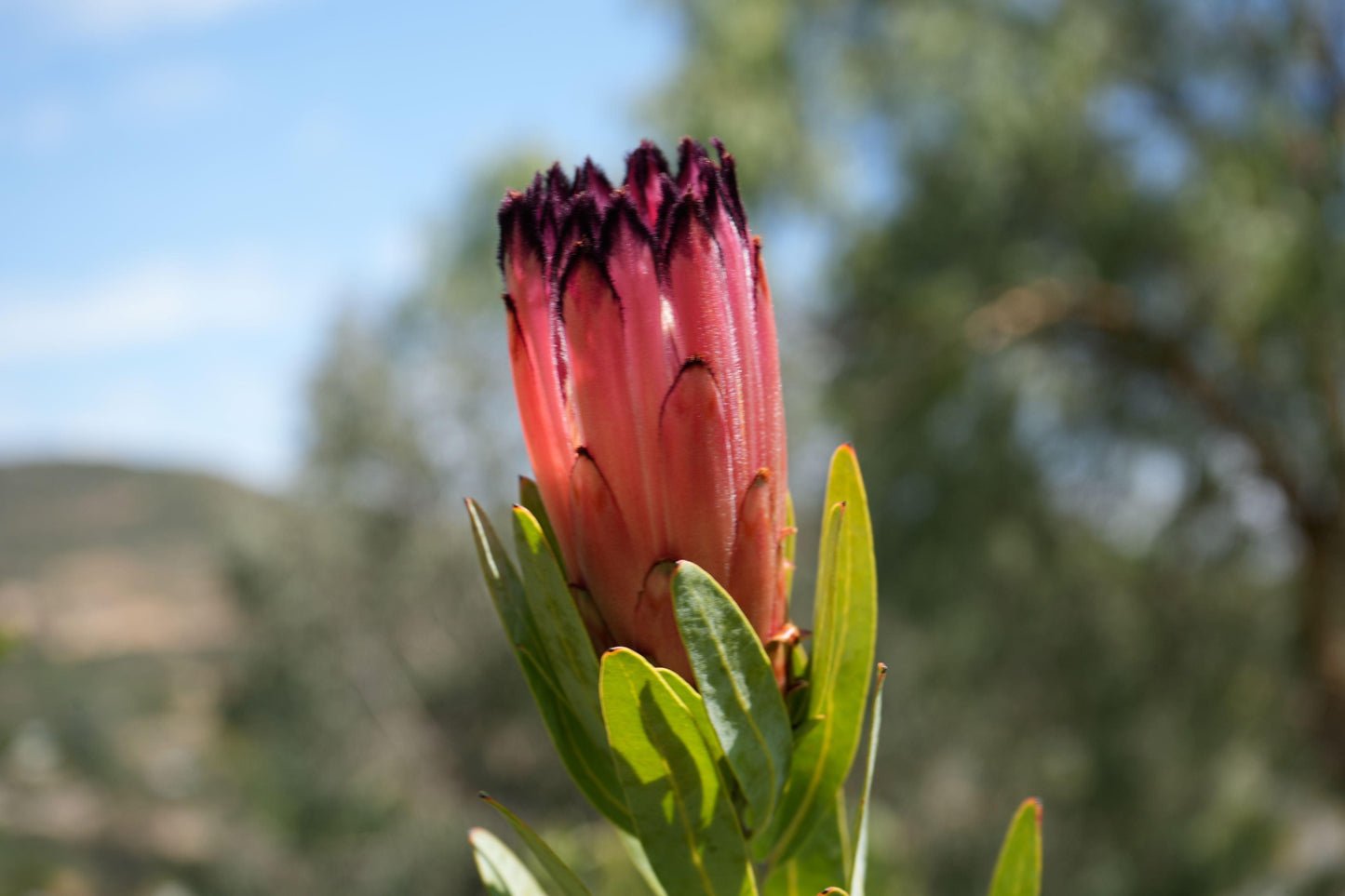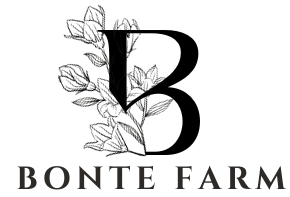Bonte Farm
Protea 'Pink Mink': A Vibrant Addition to Your Garden
Protea 'Pink Mink': A Vibrant Addition to Your Garden
Couldn't load pickup availability
💖 Protea 'Pink Mink': The Fluffy, Prolific Pink Bloom
The Protea 'Pink Mink' (Protea nerifolia hybrid) is a classic and exceptionally popular Protea hybrid, revered for its profuse flowering and beautiful, fluffy texture. This handsome evergreen shrub is easily recognized by its striking, elongated, cone-shaped blooms in a rich, vibrant shade of deep pink to rosy-red, often tipped with a distinctive black, velvety tuft that gives it its signature 'mink' look. 'Pink Mink' is an outstanding, high-value specimen plant for Mediterranean, coastal, and architectural gardens. Its robust growth, superior drought tolerance, and ability to thrive in poor soils make it a reliable and low-maintenance choice, yielding superb, straight-stemmed long-lasting cut flowers and a consistent source of nectar for hummingbirds.1
Botanical Characteristics
|
Characteristic |
Detail |
|
Scientific Name |
Protea nerifolia 'Pink Mink' (Hybrid Cultivar) |
|
Common Names |
Pink Mink Protea, Oleander-Leaf Protea Hybrid. |
|
Growth Habit |
A sturdy, upright evergreen shrub with a dense, rounded, and naturally bushy habit. |
|
Foliage |
Features slender, dark green, needle-like leaves densely arranged along the stems, providing fine texture. |
|
Flowers |
Elongated, cone-shaped flower heads (bracts), typically 5–7 inches long. Color is a rich rosy-pink with a distinctive black, furry tip. |
|
Flowering Season |
Known for its prolific, extended bloom period, typically flowering heavily from late fall through spring, providing essential cool-season color. |
|
Cut Flower Use |
Excellent, professional-grade cut flower, highly valued for its straight stems and longevity. |
Mature Size
'Pink Mink' is a substantial shrub, providing excellent screening and structure.
- Height: Typically reaches 6–8 feet (1.8–2.4 meters) tall.
- Spread: Achieves a dense, manageable spread of 6–8 feet (1.8–2.4 meters) wide.
- Its size is perfect for creating a bold, structural backdrop.
USDA Hardiness Zone
This Protea hybrid is best suited for USDA Hardiness Zones 9–11. It thrives in mild, nearly frost-free coastal and Mediterranean climates where it receives full sun. It is intolerant of sustained freezing temperatures.
Cultivation and Care
|
Aspect |
Care Instructions |
|
Sunlight |
Requires full sun (a minimum of 6 hours of direct sun daily) and excellent air circulation to ensure strong stems and abundant blooms. |
|
Soil |
Essential: Demands perfectly well-drained, acidic soil (pH 5.0–6.0). It thrives in sandy, gritty, low-nutrient soils and must not sit in heavy, wet clay. |
|
Water |
Highly drought-tolerant once established. Water deeply during the first year. Mature plants require minimal summer water; overwatering is highly detrimental. |
|
Fertilizer |
Crucial: ABSOLUTELY AVOID all phosphorus fertilizers. Proteas are extremely phosphorus-sensitive. Use a specialized, low-phosphorus formula for Proteaceae, or skip fertilizing entirely. |
|
Pruning |
Mandatory: The best pruning is achieved by harvesting the flowers heavily, cutting the stems back into the leafy part of the shrub to promote fresh, dense growth and maximum flower count. |
Landscape Use
- Screening and Backdrop: Its substantial size and dense habit make it ideal for creating a flowering informal screen.
- Specimen Plant: Used as a vibrant focal point due to its rich color and unique, fluffy flower tips.
- Cut Flower Garden: Grown specifically for its reliable, professional-grade floral stems.
- Xeriscape Design: A reliable, low-water, low-fertility plant for arid and Mediterranean-style gardens.
Wildlife Attraction
The flowers produce a copious amount of sweet nectar, making them extremely attractive to nectar-feeding birds, which serve as the primary pollinators.2 Planting 'Pink Mink' is an excellent way to invite hummingbirds and native birds into the cool-season garden.
Pest and Disease Resistance
Protea 'Pink Mink' is generally a hardy and robust plant when its crucial drainage needs are met.3 The most common issues are root rot and collar rot, which are caused by poor soil drainage or overwatering—this is the single most critical factor to avoid.
Propagation
To ensure the resulting plant maintains the specific, desirable traits, profuse blooming, and rosy-pink color of the 'Pink Mink' cultivar, propagation must be conducted using vegetative methods. Semi-hardwood cuttings are the preferred and most reliable technique, generally taken during the warmer months. Propagation from seed is not used for maintaining cultivar identity.
Share
